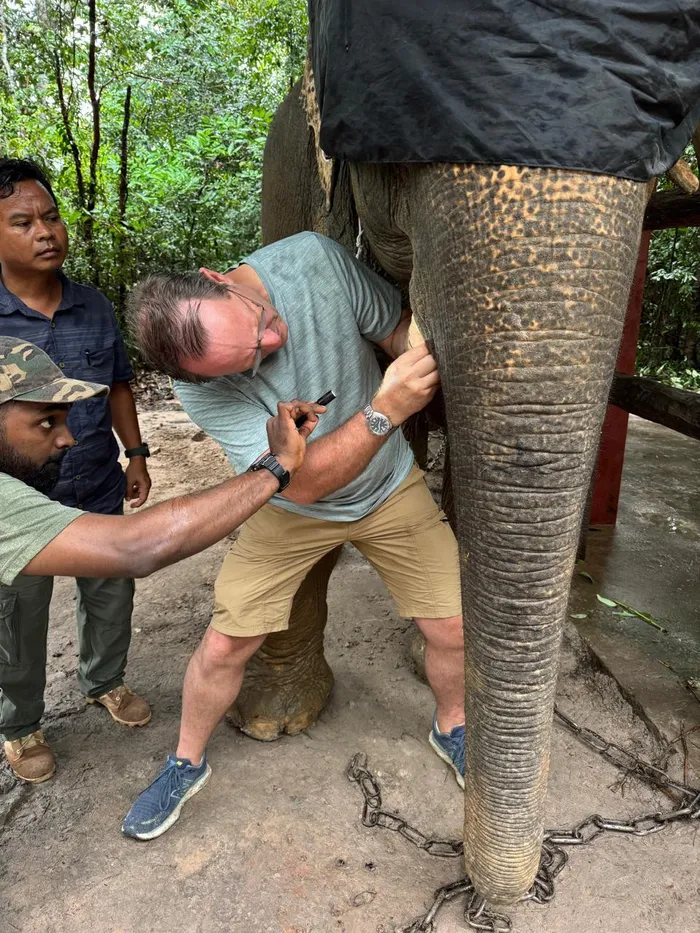Groundbreaking tusk extraction by University of Pretoria's veterinary team saves Cambodian elephant

UP's Professor Gerhard Steenkamp busy extracting the tusk of Cambodian elephant Chi Chlorb.
Image: Supplied
The University of Pretoria’s (UP) veterinary team came to the rescue of a distressed Cambodian elephant with a fractured tusk by performing the first extraction of this kind.
Dealing with a distressed elephant with tusk problems is not unfamiliar to Professor Gerhard Steenkamp, a veterinary specialist in dentistry and maxillofacial surgery at UP’s Faculty of Veterinary Science.
Over the years, he has travelled the world to lead and assist with specialised procedures involving elephants and other wildlife species.
But this time, an emergency call took him to Cambodia, where a tusk extraction procedure on elephants had never been done before.
The journey leading up to this huge undertaking began about 18 months ago, when Dr Navaneetha Roopan, head veterinarian of Wildlife Alliance – a conservation and rescue NGO that operates in the Phnom Tamao Wildlife Rescue Centre in Cambodia – visited Kulen Elephant Forest (KEF).
He noticed an elephant named Chi Chlorb with a fractured tusk.
The KEF is a 400-hectare elephant retirement reserve in Siem Reap province that provides sanctuary for former captive Asian elephants, many of whom spent most of their lives in the tourism industry.
Roopan and Steenkamp’s paths crossed at a conference last year in China, where Steenkamp had delivered a lecture. “After the talk, Dr Roopan approached me and asked if I would assist with Chi Chlorb’s case, and of course I agreed,” Steenkamp said.
The intervention was planned for this year, and Steenkamp, along with Professor Adrian Tordiffe – a veterinary wildlife specialist at animal rescue and rehabilitation centre Vantara in India and an extraordinary lecturer at UP – travelled to Cambodia to perform the tusk extraction.
Tordiffe has worked with Steenkamp on various missions around the world and typically administers anaesthesia for procedures. This time was no exception.
This was also the first time an elephant underwent general anaesthesia in Cambodia.
Steenkamp commented that it is significant that the Indian centre supported this project. “It shows how much knowledge and experience they’ve developed – and continue to develop – at Vantara, and how they may continue to play a significant role in supporting veterinarians and wildlife conservation across Asia in the future.”
From sedation to standing, the surgery took about an hour and a half and was a great success. The extraction procedure also served as a valuable learning and observation experience for veterinarians from Thailand and Singapore who attended the surgery.
Since the operation two weeks ago, Chi Chlorb has been recovering well.
The impact of this procedure is said to go far beyond the well-being of a single elephant. It is another powerful example of how UP’s veterinary faculty continues to contribute its expertise to global wildlife conservation, fostering knowledge-sharing and capacity-building across continents.
zelda.venter@inl.co.za
Related Topics: